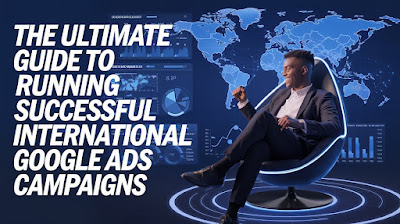Introduction
In the ever-evolving world of SEO and digital marketing, staying ahead of the competition requires innovative strategies. Many marketers are now adding audio versions of blog posts to enhance user experience. But does this impact search engine rankings? Let’s dive deep into what Google has to say about it and how it can indirectly benefit your website’s performance.
Google’s Take on Audio Blog Posts & SEO
Recently, in a Google SEO Office Hours session, Martin Splitt, a Google Developer Advocate, addressed whether adding audio versions of blog posts could boost search rankings. His response was clear:
“I don’t think it will… I think it is a good thing for the user, though, so I would definitely do it—but not for SEO reasons.”
While this might sound discouraging for those hoping for an SEO boost, there are still plenty of reasons why adding audio content is a smart move for your website.
Why You Should Add Audio to Blog Posts
Even though Google confirms that audio versions don’t directly impact SEO, they can significantly enhance user experience (UX), which plays a crucial role in rankings.
1. Enhanced Accessibility & User Engagement
Adding audio content makes your blog accessible to a broader audience, including those who prefer listening over reading or have visual impairments. Accessibility improvements lead to a better user experience, which in turn increases dwell time and lowers bounce rates—both key SEO factors.
2. Increased Dwell Time & Reduced Bounce Rate
Search engines, especially Google, analyze user behavior signals like time on page and bounce rate to determine content quality. Engaging audio versions of blog posts encourage visitors to stay longer, boosting your site’s credibility in Google’s eyes.
3. Higher Content Sharing & Backlink Opportunities
When content is engaging, it is more likely to be shared on social media platforms and linked back from other websites. Backlinks remain one of the strongest SEO ranking factors, making high-quality audio content a potential indirect booster for your search engine visibility.
How to Optimize Audio Content for SEO
If you decide to add audio to your blog posts, make sure to optimize it effectively to maximize its benefits.
1. Use Structured Data for Audio SEO
Implementing structured data markup (Schema.org) helps search engines understand and index your audio content. Use Podcast schema or AudioObject markup to provide relevant details to Google bots.
2. Transcribe Your Audio Content
Providing text transcripts alongside your audio ensures that search engine crawlers can index your content. Google’s algorithm still relies heavily on text-based data, so offering a transcript improves your SEO ranking potential.
3. Optimize Audio Metadata
Just like images have alt-text, audio files should include optimized metadata such as:
- File Name: Use relevant keywords (e.g., “seo-audio-content.mp3” instead of “audio1.mp3”).
- Title & Description: Add keyword-rich titles and meta descriptions.
- Tags: Use relevant keywords to help categorize the content for search engines.
4. Host Audio on Fast & SEO-Friendly Platforms
Speed matters for SEO rankings. Host your audio files on fast-loading platforms like Amazon S3, SoundCloud, or a Content Delivery Network (CDN) to ensure minimal impact on page speed.
Additional Benefits of Adding Audio to Your Blog
1. Better Mobile User Experience
With the rise of voice search and mobile browsing, offering an audio option improves engagement. Many users prefer listening to articles while driving, working out, or multitasking.
2. Supports Google’s E-E-A-T Guidelines
Google prioritizes content that follows E-E-A-T (Experience, Expertise, Authoritativeness, and Trustworthiness). Adding audio content enhances your brand’s credibility and trust, leading to better SEO rankings over time.
3. Strengthens Brand Identity
By adding podcast-style narration or voiceovers, you establish a stronger brand voice, making your content more memorable and shareable.
Final Thoughts: Should You Add Audio to Your Blog?
While audio versions of blog posts don’t directly boost SEO rankings, they enhance user experience, engagement, and shareability—all of which contribute to higher search visibility over time.
By implementing these strategies, you can make your blog content more engaging while positioning your brand for long-term SEO success.








